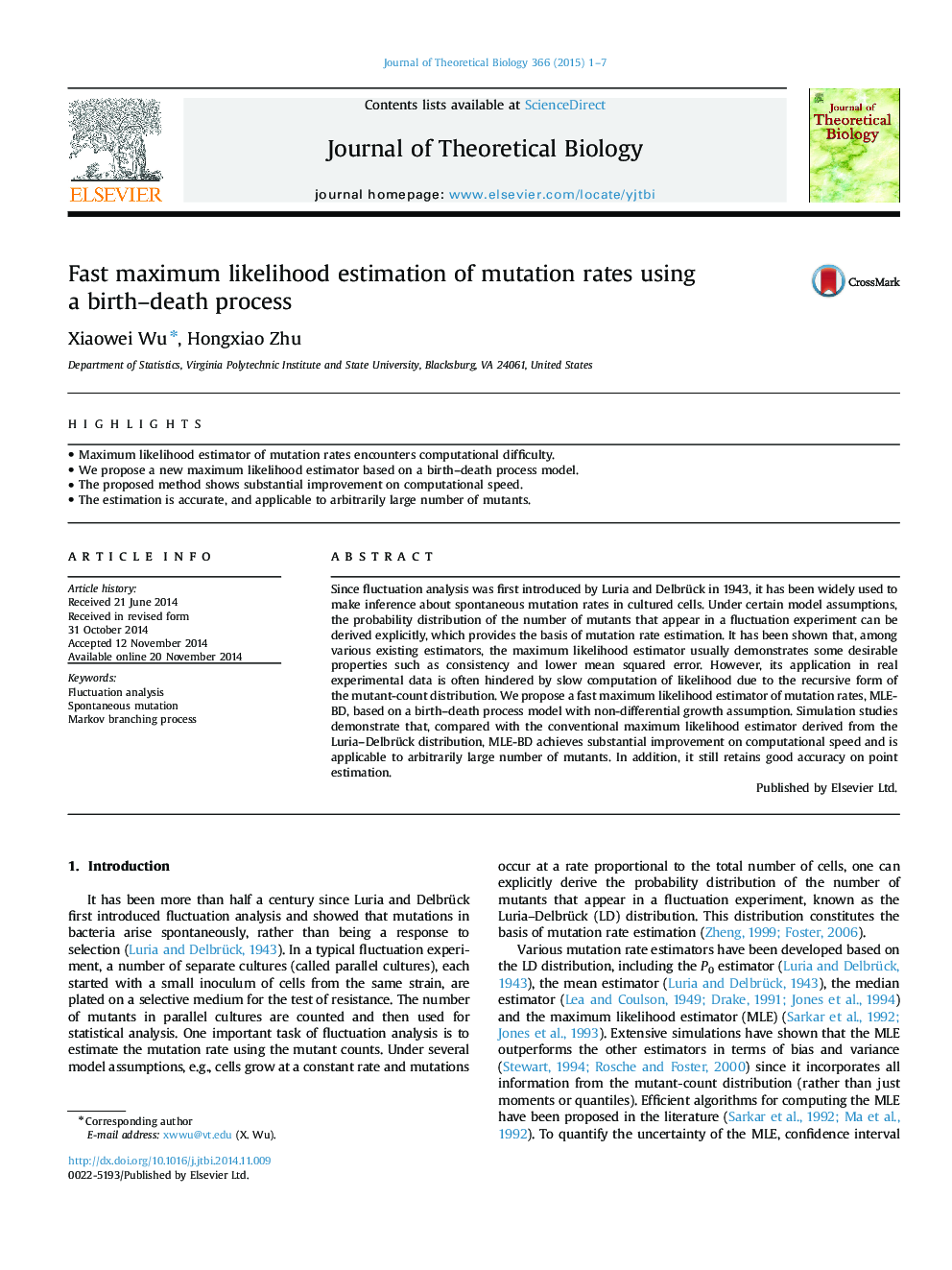| کد مقاله | کد نشریه | سال انتشار | مقاله انگلیسی | نسخه تمام متن |
|---|---|---|---|---|
| 4496064 | 1623844 | 2015 | 7 صفحه PDF | دانلود رایگان |
• Maximum likelihood estimator of mutation rates encounters computational difficulty.
• We propose a new maximum likelihood estimator based on a birth–death process model.
• The proposed method shows substantial improvement on computational speed.
• The estimation is accurate, and applicable to arbitrarily large number of mutants.
Since fluctuation analysis was first introduced by Luria and Delbrück in 1943, it has been widely used to make inference about spontaneous mutation rates in cultured cells. Under certain model assumptions, the probability distribution of the number of mutants that appear in a fluctuation experiment can be derived explicitly, which provides the basis of mutation rate estimation. It has been shown that, among various existing estimators, the maximum likelihood estimator usually demonstrates some desirable properties such as consistency and lower mean squared error. However, its application in real experimental data is often hindered by slow computation of likelihood due to the recursive form of the mutant-count distribution. We propose a fast maximum likelihood estimator of mutation rates, MLE-BD, based on a birth–death process model with non-differential growth assumption. Simulation studies demonstrate that, compared with the conventional maximum likelihood estimator derived from the Luria–Delbrück distribution, MLE-BD achieves substantial improvement on computational speed and is applicable to arbitrarily large number of mutants. In addition, it still retains good accuracy on point estimation.
Journal: Journal of Theoretical Biology - Volume 366, 7 February 2015, Pages 1–7
